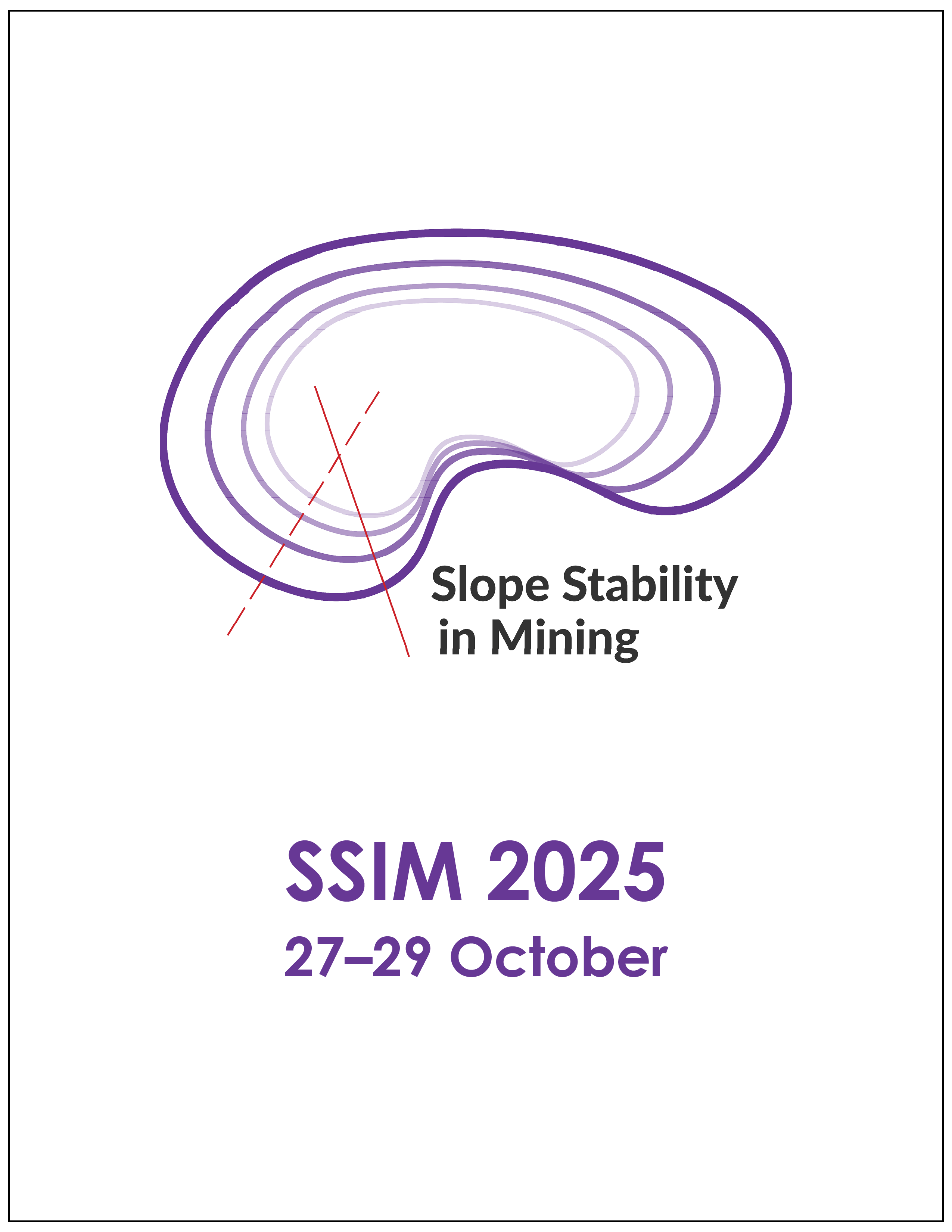De-risking a Pilbara iron ore pit slope design through a stochastic structural stability assessment

|
Authors: Rogers, S; Byrne, C; Fogel, Y,Ojeda, P; Pere, V; Correia, C |
DOI https://doi.org/10.36487/ACG_repo/2535_39
Cite As:
Rogers, S, Byrne, C, Fogel, Y,Ojeda, P, Pere, V & Correia, C 2025, 'De-risking a Pilbara iron ore pit slope design through a stochastic structural stability assessment', in JJ Potter & J Wesseloo (eds), SSIM 2025: Fourth International Slope Stability in Mining Conference, Australian Centre for Geomechanics, Perth, https://doi.org/10.36487/ACG_repo/2535_39
Abstract:
Assessing some of the key risks associated with advancing pit slope design can be challenging during early mine life, with geotechnical data primarily focused on project development and a relatively immature structural model. With data uncertainty being relatively high at this stage, it is not always easy to identify what the critical controls are on inter-ramp and overall wall-scale stability. An assessment on a double pit design, separated by a central pillar – within the Pilbara region of Western Australia – utilised a discrete fracture network (DFN) based approach to assess structural stability uncertainties. The DFN included a regional scale structural model, as deterministic larger scale major brittle structures, along with stochastically generated intermediate-scale -bedding related structures, joints, and fault structures. Material and fault geometry properties were defined for litho-domains using available geotechnical logging and pit mapping data from the first few benches of the excavation. The combination of deterministic and stochastic structures was then used to identify the potential formation of rock wedges in the wall using the developed DFN model. A large number of DFN realisations were run, with each generating potentially hundreds of thousands of blocks. The stability of each block was evaluated, considering discontinuity strengths, rock mass strengths, and pore pressure. This stochastic structural approach allows the estimation of probability of failure (POF) for each design and the development of heat maps, highlighting areas of potential multi-bench instability. Structurally controlled instabilities were seen to be strongly correlated to the presence of regional fault structures and to achieving dewatering targets. Sensitivities showed that should these faults be stronger than modelled in the design, then both the scale and frequency of potentially unstable blocks are reduced. The results of this study helped guide future data acquisition needs, slope monitoring targets, and improved confidence that structurally controlled mechanisms are well understood and managed in the design.
Keywords: DFN, limit equilibrium, structural stability assessment, probability of failure, risk assessment
References:
Chilès, JP, Wackernagel, H, Beucher, H, Lantuéjoul, C & Elion, P 2008, ‘Estimating fracture density from a linear or areal survey’, in JM Ortiz & X Emery (eds), Geostats 2008: Proceedings of the Eighth International Geostatistics Congress, Gecamin, Santiago, pp. 535–544.
Dershowitz, WS & Herda, HH 1992, ‘Interpretation of fracture spacing and intensity’, in JR Tillerson & WR Wawersik (eds), Proceedings of the 33rd US Rock Mechanics Symposium, AA Balkema, Rotterdam.
Hoek, E, Carranza-Torres, CT & Corkum, B 2002, ‘Hoek-Brown failure criterion – 2002 edition’, Proceedings of the Fifth North American Rock Mechanics Symposium, University of Toronto Press, Toronto, vol. 1, pp. 267–273.
Hoek, E, Carter, TG & Diederichs, MS 2013, ‘Quantification of the geological strength index chart’, in LJ Pyrak-Nolte, A Chan, W Dershowitz, J Morris, J Rostami (eds) Proceedings of the 47th Rock Mechanics/Geomechanics Symposium, American Rock Mechanics Association, Eaton, pp. 1757–1764.
Lawrence, KP, Nelson, MD, Yetisir, M & Matlashewski, P 2020, ‘Kinematic assessment of composite failure mechanisms in pit slopes — a novel slip surface identification algorithm for DFN models’, Proceedings of the 54th US Rock Mechanics/Geomechanics Symposium, American Rock Mechanics Association, Eaton.
Read, J & Stacey, P 2009, Guidelines for Open Pit Slope Design, CSIRO Publishing, Collingwood.
Rogers, SF, Elmo, D, Webb, G & Guajardo Moreno, C 2016, ‘DFN modelling of major structural instabilities in a large open pit for end-of-life planning purposes’, Proceedings of the 50th US Rock Mechanics/Geomechanics Symposium, American Rock Mechanics Association, Eaton.
Rogers, S, Valerio, M, Fogel, Y, Byrne, C & Ojeda, P 2023, ‘Evaluation of inter-ramp scale non-daylighting wedges using a discrete fracture network-based method’, in PM Dight (ed.), SSIM 2023: Third International Slope Stability in Mining Conference, Australian Centre for Geomechanics, Perth, pp. 951–964,
Valerio, M, Rogers, S, Lawrence, KP, Moffitt, KM, Rysdahl, B & Gaida, M 2020, ‘Discrete fracture network based approaches to assessing inter-ramp design', in PM Dight (ed.), Slope Stability 2020: Proceedings of the 2020 International Symposium
on Slope Stability in Open Pit Mining and Civil Engineering, Australian Centre for Geomechanics, Perth,
WSP 2025, FracMan Interactive Discrete Feature Data Analysis, Geometric Modeling, and Exploration Simulation User Documentation, version 8.4, WSP, London.
Wyllie, DC 2003, Foundations on Rock: Engineering Practice, 2nd edition, CRC Press, New York.
© Copyright 2025, Australian Centre for Geomechanics (ACG), The University of Western Australia. All rights reserved.
View copyright/legal information
Please direct any queries or error reports to repository-acg@uwa.edu.au
View copyright/legal information
Please direct any queries or error reports to repository-acg@uwa.edu.au

